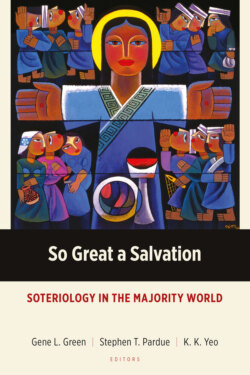Читать книгу So Great a Salvation - Группа авторов - Страница 5
На сайте Литреса книга снята с продажи.
The Traditional Landscape and Biblical Repertoire Traditional Theories of Salvation
ОглавлениеWhat is salvation? Is salvation the same as redemption, liberation, enlightenment, awakening, forgiveness, attaining nirvana, or going to heaven? Theories of salvation abound in world religions and Christian theologies. Traditionally, and primarily in the North Atlantic West, soteriology (the doctrine of salvation) is construed as:
1. mystical theory, the orthodox understanding of salvation as divinization of the human being via communicability of the divine-human nature and, later in Christian history, Friedrich Schleiermacher’s understanding of God-consciousness
2. ransom theory (Athanasius, Origen, Irenaeus, Martin Luther, and Karl Barth), which views salvation based on the vicarious atonement of Jesus (Isa. 53:10, “an offering for sin”; Rom. 3:22–25; Heb. 10:12, 14; Mark 10:45) and thus understands Jesus as the Victor (Johann Christoph Blumhardt; as in Gustaf Aulén’s Christus Victor) over enemies such as chaos, darkness, the devil, or sin and death
3. satisfaction theory, or the juridical view (Cyprian, Gregory the Great, Ambrose, Augustine; then Anselm of Canterbury, Cur Deus Homo? [Why the God Man?]), which argues that the salvation of humanity can be attained only by Jesus Christ the God-human, who alone can make satisfactory reparation for the wounded honor of God (against the previous view that the debt is paid to the devil)
4. penal substitutionary theory of the Reformers (John Calvin, J. I. Packer, Donald G. Bloesch),[2] which interprets salvation as Christ’s bearing human sins in their place, thus taking the punishment on the behalf of sinners because sinners violated the demands of God’s law, which requires God’s holiness and justice from humanity (against the view of satisfying God’s honor)
5. moral example theory (Peter Abelard, Friedrich Schleiermacher, Horace Bushnell), which holds that salvation is the work of Jesus Christ, whose death on the cross sets an example for people to imitate Christ morally, so that they will become fully human
6. participatory soteriology (James F. McGrath, Mark M. Mattison, Marcus J. Borg, and John Dominic Crossan), which sees the ones “in Christ” as those who participate in Christ’s atonement work as they follow the path of dying and rising so that they themselves may be internally transformed.[3]
Daniel Treier, in his lead chapter in this volume, has given us a more detailed exposition of the Western understandings of salvation, from the Orthodox, Catholic, Lutheran, Calvinist, Anabaptist, Arminian, Wesleyan, to the Pentecostal. I agree with Treier, who observes that the chief lacunae in traditional dogmatic soteriology are the sociopolitical and cosmic dimensions of salvation. However, I attribute the cause of such lacunae to the Western tendency to read Scripture and construct theology without paying much attention to Scripture’s contexts and that of the readers. Thus, by reading abstractly and turning inward on themselves, Western soteriologies, according to Treier, focus too exclusively on the personal blessings of participation in the new covenant.
